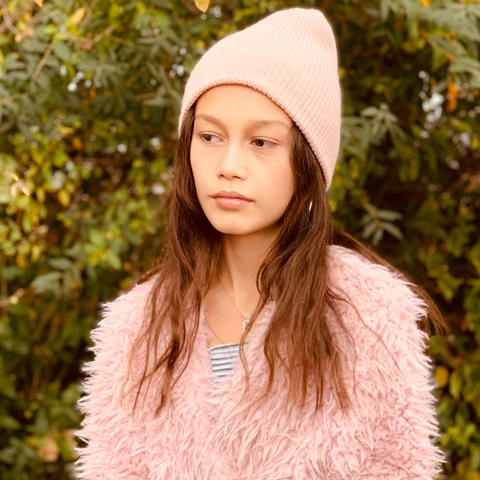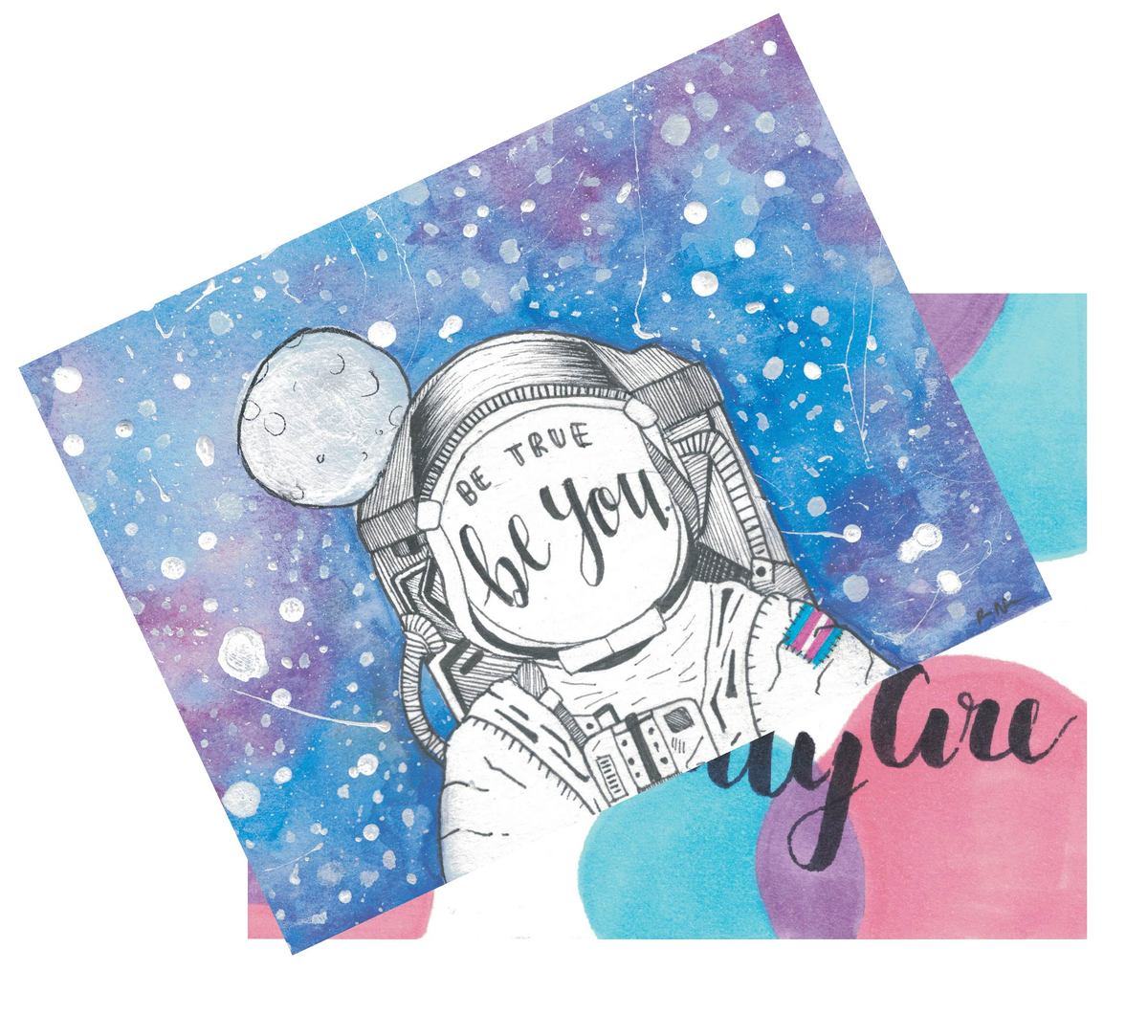Comfortable Being You: How RUBIES Form-Fitting Wear is Supporting Transgender Youths
 Ruby is a 12-year-old girl with a lot of hobbies: swimming, dancing, skateboarding, making videos on TikTok. Like most kids her age, she wants to feel comfortable and confident in her favorite activities—and a lot of that has to do with what she wears. But finding the right clothes hasn’t always been easy.
Ruby is a 12-year-old girl with a lot of hobbies: swimming, dancing, skateboarding, making videos on TikTok. Like most kids her age, she wants to feel comfortable and confident in her favorite activities—and a lot of that has to do with what she wears. But finding the right clothes hasn’t always been easy.
Ruby was 9 years-old when she started to socially transition.

Finding clothes that were suitable for her was a challenge from the beginning, especially when it came to swimming.
At first, Ruby humored her parents, Jamie and Angela, and wore board shorts to the pool. But on her 11th birthday, she asked them if she could wear a bikini like all the other girls her age. They happily agreed.
“Initially, we just bought her regular bikinis, and they worked fine in most situations,” says Jamie.
It wasn’t until they were booking a family trip to an unfamiliar country that they started to question Ruby’s safety wearing a bikini on the beach. “I honestly wasn’t sure how much acceptance there was there,” Jamie explains.
Body positivity is an important and nuanced matter, especially for transgender children. Clothing with the right coverage ensures more than just comfort and support—it can provide physical safety, too. Transgender youths are subject to bullying and violence at much higher rates than cisgender youths, a reality Jamie and Angela were acutely aware of. Their concern spurred a thorough online search for bottoms with better compression.
How one founder went from developing software to designing form-fitting wear
There are over 400,000 transgender and non-binary children in North America alone. Yet, when Jamie started browsing for swimwear for Ruby, he was surprised by the lack of options.
All the products were for trans adults then sized down. There were no brands that spoke to trans kids, who are the same as other kids and just want something that resonates with them.
He was determined to change that.
In October of 2019, Jamie left his role as Chief Technology Officer at a software company he'd founded to start a new business: RUBIES. His mission was to create form-fitting bikini bottoms for transgender girls and non-binary kids under the age of 14. More importantly, he wanted to build a brand that uplifted trans kids.
“There’s a big political focus in the transgender community, which I’m grateful for. But, I didn’t want to go that route with RUBIES,” Jamie says. “I wanted to focus on celebrating trans kids. Because that’s what they are: they’re just kids. And we should celebrate them the way we celebrate all other kids."
Though wholly new to apparel and fashion, Jamie was no stranger to entrepreneurship, having previously built three successful businesses. He poured himself into the inclusive fashion industry and joined the Fashion Zone at Ryerson, which helps aspiring entrepreneurs start apparel businesses. The Fashion Zone provides budding entrepreneurs with access to equipment, workshops, and industry advisors and professionals.
It was there that he met a local garment engineer, Olena Vivcharyuk. Jamie’s vision resonated with Olena, and she helped design and sew the first bikini bottom prototype for RUBIES.
With her help, Jamie produced 25 bikini bottom prototypes, and was ready to start testing them. Jamie knew from his former roles that it was integral to get as much feedback as possible, as early as possible.
Whether you’re designing software products or clothing, the same processes apply: product testing, cycles of R&D, early feedback, and so on.

As a member of various groups on Facebook for parents with transgender children, Jamie knew how close-knit the community was and quickly realized parents would be open to their kids trying out the bottoms. In exchange for their time and feedback, RUBIES offered them free bikini bottoms by mail.
What Jamie didn't expect was just how much enthusiasm he'd encounter. “I was overwhelmed with the positive responses. But, the first set of bottoms were completely wrong by a full size. Every single prototype. It was a mess,” Jamie says, laughing. But that didn’t deter him.
Ten iterations later, Jamie was ready to launch the Ruby Shaping Bikini Bottom product.
Within two months, RUBIES had shipped over 250 pairs.
Today, each pair of RUBIES bikini bottoms and underwear features a soft compression that provides worry-free comfort and helps keep everything in place. It’s designed for the beach, or the pool without the slightest compromise in style.
Building a community, one postcard at a time
From the outset, Jamie knew RUBIES needed to sell online and direct-to-consumer. He wanted to maintain end-to-end control of the brand and their products, but more importantly, preserve the firsthand relationship with customers and their families.
As for RUBIES' namesake, she’s present all over the website, whether it’s dancing GIFs or modelling the products. The brand is very much a reflection of Ruby herself—fun, bright, full of positivity, and warmth.
And Ruby’s influence extends well beyond the brand’s name—she’s also the brains behind the postcard program. Since they started shipping packages, Ruby would slip a handmade postcard into every order Jamie sent out. She wants to make sure that every kid felt supported, seen, and understood.

I love writing the postcards. It’s relaxing. It makes me happy to think about the kids who receive the packages. A few of them have become my friends.
Seeing the profound impact the postcards were having on children and their families, Jamie expanded the postcard program through Ruby’s school teachers and their network. The program encourages teachers and their classrooms to submit artwork and handwritten notes that are turned into postcards and included in every packaged order sent by RUBIES.

Since the pandemic has hampered the school postcard program, Jamie has shifted his focus to corporate programs through the Every Girl Deserves to Shine Campaign.
In fact, in May of this year, Jamie and Ruby joined Shopify’s Town Hall, a live internal broadcast, to talk about RUBIES and share their story. Thousands of employees tuned in and helped RUBIES raise over $22,000 in donations in under an hour.
Helping transgender girls shine everyday
For many transgender children, passing is a privilege, and Jamie recognizes that affording RUBIES bikini bottoms isn’t an option for many families that might benefit from them. That’s why he’s also launched a program for free swimwear.
“The feedback I’ve gotten from parents is that this will get their kids swimming again. Get them feeling good about themselves again. I don’t want to put a price on that,” Jamie says.
It’s a goodwill system. I’m not adjudicating who deserves free items or not. All I ask for in return is feedback so we can make this product even better for our kids.
Jamie has set a goal to send 1,000 free pairs of bottoms globally to families in need over the next year, with RUBIES even covering the cost of shipping. To him, connecting with other families and giving children the freedom to be themselves has always been the most fulfilling aspect of building the business.
The future is bright
Looking forward, Jamie wants to shift more of his focus on building awareness for RUBIES through more investments in marketing. With many of his customer referrals coming organically from Facebook, he’s eager to take advantage of Shopify's recent partnership with Facebook, which lets business owners create a customized online storefront for Facebook and Instagram.
I haven't spent anything on marketing at the moment. Part of the reason is I'm always behind in my inventory. Don’t get me wrong, it’s a great problem to have. But the next step is ramping up marketing.
To date, the impact this father-daughter duo has made is nothing short of life-changing. And they’re not stopping at swimwear. Since meeting at the Fashion Zone, Olena has joined Jamie to help him design two new RUBIES products: a one-piece bathing suit and leggings.
“Three products will keep us busy for the next couple of years, but who knows where else we will expand,” Jamie says.
And as for advice for parents with transgender children? Jamie doesn’t have all the answers—and he doesn’t pretend to, either. But if there’s one thing he’s learned, it’s this: “You have to let your kid lead you.”
Illustration by Eugenia Mello